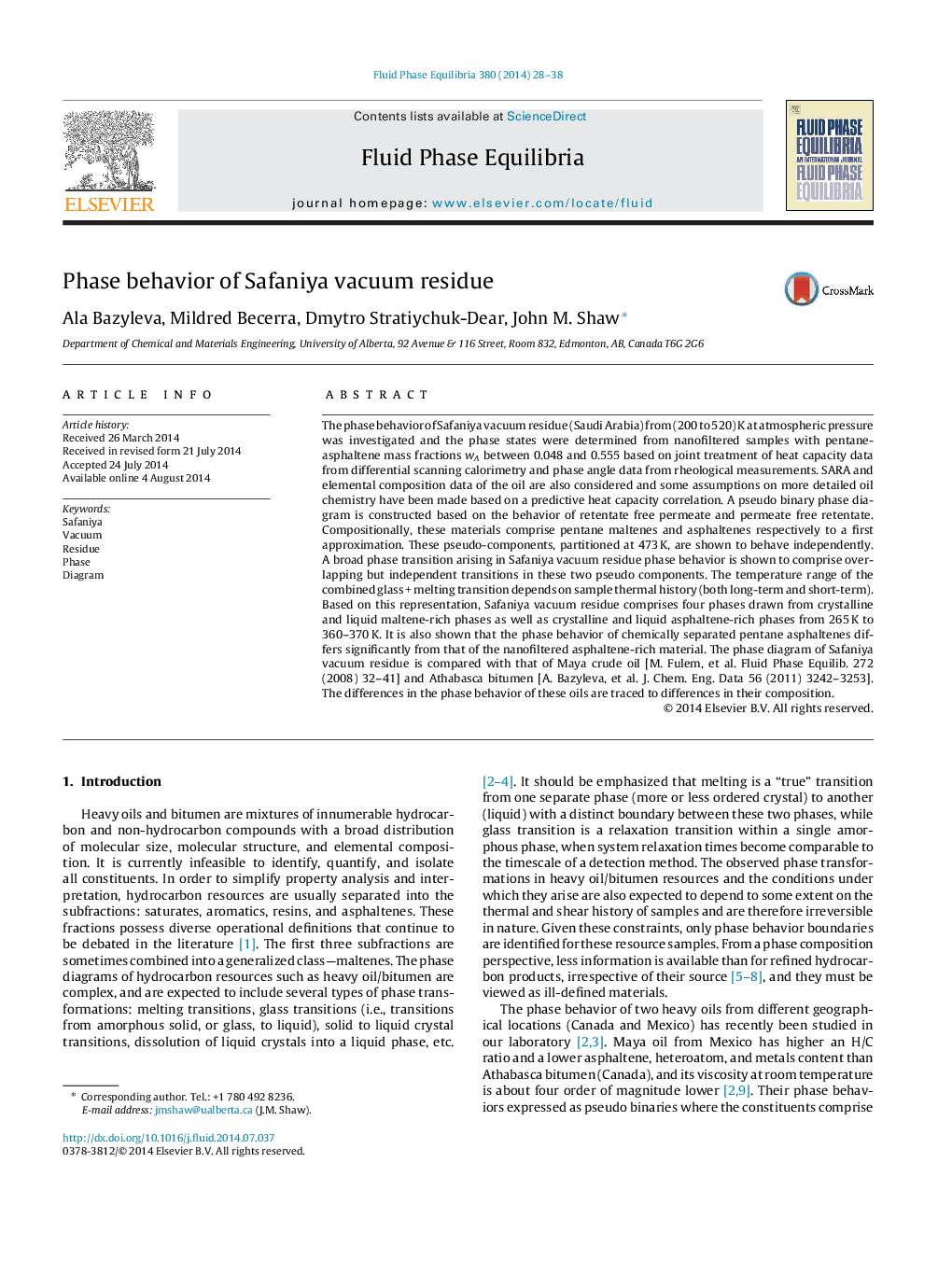| کد مقاله | کد نشریه | سال انتشار | مقاله انگلیسی | نسخه تمام متن |
|---|---|---|---|---|
| 201062 | 460532 | 2014 | 11 صفحه PDF | دانلود رایگان |

• A hydrocarbon resource fraction possessing up to four phases in equilibrium.
• Nanofiltered asphaltene fraction is responsible for viscosity value.
• Nanofiltered maltene fraction is responsible for the transition to non-newtonian rheological behavior.
• Two other resources, Maya crude oil and Athabasca bitumen share these properties.
• The behavior of such hydrocarbon resources appears generalizable.
The phase behavior of Safaniya vacuum residue (Saudi Arabia) from (200 to 520) K at atmospheric pressure was investigated and the phase states were determined from nanofiltered samples with pentane-asphaltene mass fractions wA between 0.048 and 0.555 based on joint treatment of heat capacity data from differential scanning calorimetry and phase angle data from rheological measurements. SARA and elemental composition data of the oil are also considered and some assumptions on more detailed oil chemistry have been made based on a predictive heat capacity correlation. A pseudo binary phase diagram is constructed based on the behavior of retentate free permeate and permeate free retentate. Compositionally, these materials comprise pentane maltenes and asphaltenes respectively to a first approximation. These pseudo-components, partitioned at 473 K, are shown to behave independently. A broad phase transition arising in Safaniya vacuum residue phase behavior is shown to comprise overlapping but independent transitions in these two pseudo components. The temperature range of the combined glass + melting transition depends on sample thermal history (both long-term and short-term). Based on this representation, Safaniya vacuum residue comprises four phases drawn from crystalline and liquid maltene-rich phases as well as crystalline and liquid asphaltene-rich phases from 265 K to 360–370 K. It is also shown that the phase behavior of chemically separated pentane asphaltenes differs significantly from that of the nanofiltered asphaltene-rich material. The phase diagram of Safaniya vacuum residue is compared with that of Maya crude oil [M. Fulem, et al. Fluid Phase Equilib. 272 (2008) 32–41] and Athabasca bitumen [A. Bazyleva, et al. J. Chem. Eng. Data 56 (2011) 3242–3253]. The differences in the phase behavior of these oils are traced to differences in their composition.
Figure optionsDownload as PowerPoint slide
Journal: Fluid Phase Equilibria - Volume 380, 25 October 2014, Pages 28–38